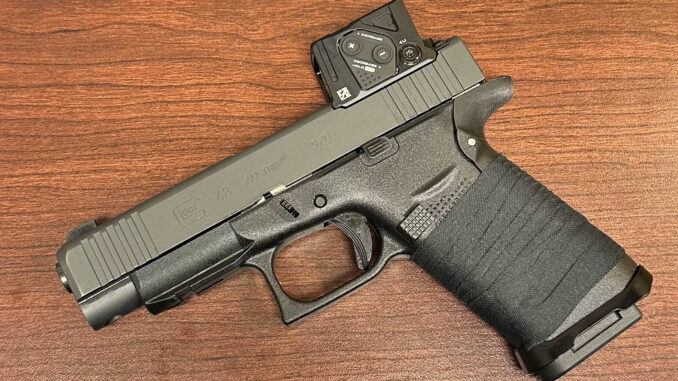
When Aimpoint and Glock announced their collaboration earlier this year, I was immediately interested. The initial press suggested that Aimpoint had fixed most of what I disliked about the ACRO P2. Furthermore, the unique cut of the COA allows for the same optic to work on slimline guns as well as duty-size guns. As I am heavily invested in the Glock 43X/48, I immediately got on the list for a Glock 48 COA combo and received my pistol in late February 2025.

Why the COA?
The COA removes the traditional optic-mounting methods from the equation. There is no need for a clamp because the body of the optic interfaces with the cut in the slide. The battery compartment resides in the slide cut area, ensuring low deck height. The practical effect of this is that Aimpoint was able to dramatically lower the optic window relative to the top of the slide. The optic sits very low and the usable window begins immediately. Changing the battery does not require optic removal and the battery is a 2032 — which is a great thing for both battery life and availability.
Tall backup sights are no longer necessary with optics like the COA. Furthermore, Aimpoint’s rear sight (part of the mounting system) is designed specifically to take up as little of the optic window as possible. These are backup sights and not a primary sighting method, so this is a feature I really appreciate. I also like that the sight’s tight placement to the optic makes it less likely the inside corners will tear up clothing.
Who is this for?
Well, institutional users are the most obvious target. A customer can simply order one SKU and receive an optic-ready pistol out of the box. The pistol is already mounted properly out of the box. It’s about as simple of a system as you can get, which is something I appreciate. I have a lot of experience mounting red dot sights properly and good information is readily available on the internet. However, at the range, the general gun-buying public obviously is not getting the memo on how to mount their optics. Even in high-end shooting classes, I’ve seen mounting failures rear their ugly heads. A relatively inexpensive package like the Glock-COA combo makes for an easy buying experience for normies.
An astute reader will note that factory gun-optic combos have been available for years now. In particular, offerings from Walther, Smith and Wesson, and Glock pair the excellent ACRO P2 with a direct milled slide on a single SKU. Other Glock SKUs pair the Trijicon RMR and Holosun 509T with direct-milled slides, and SIG’s P320 and P365 lines are both readily available with the appropriate optics from SIG, which, over the years, have gotten pretty good. My opinion is that the COA provides a better user experience than current options, as I’ll discuss below.
Observations in Use
Much like a Leone film, we’ve got The Good, The Bad, and The Ugly.
The Good – Dot Size & Controls
The optic displays the sort of brightness Aimpoint is known for. I think the 3.5MOA dot is a good compromise between people like me who prefer larger dots and folks who like small dots. It is large enough that I do not need to max out the brightness to ensure I pick the dot up. It takes a 2032 and the beefed-up Holosun-style battery tray (but using a much heavier duty screw) is easy to use. Battery life is about a year, so the better tray design is good to have.
I really like the double-press requirement to change the brightness. Pressing + or – once unlocks the brightness controls, which then allows the user to raise or lower the brightness. The “lock” resets after four seconds. This ensures that the brightness is not inadvertently adjusted. While my Tango Down battery cap mostly solves inadvertent button presses on my P2, it’s still a thing that can happen when manipulating the slide.
The Good – Optic Body
Aimpoint was able to remove a lot of the optic body on the COA. I do not know what this means when the COA is subjected to a Cowan-style torture test, but the practical effect is a smaller optic that does not give up any size to Aimpoint’s previous generation pistol duty optic. The COA window is spec’d as 15mmx15mm, which is the same size as the ACRO P2. Which of these optics looks easier to shoot with?
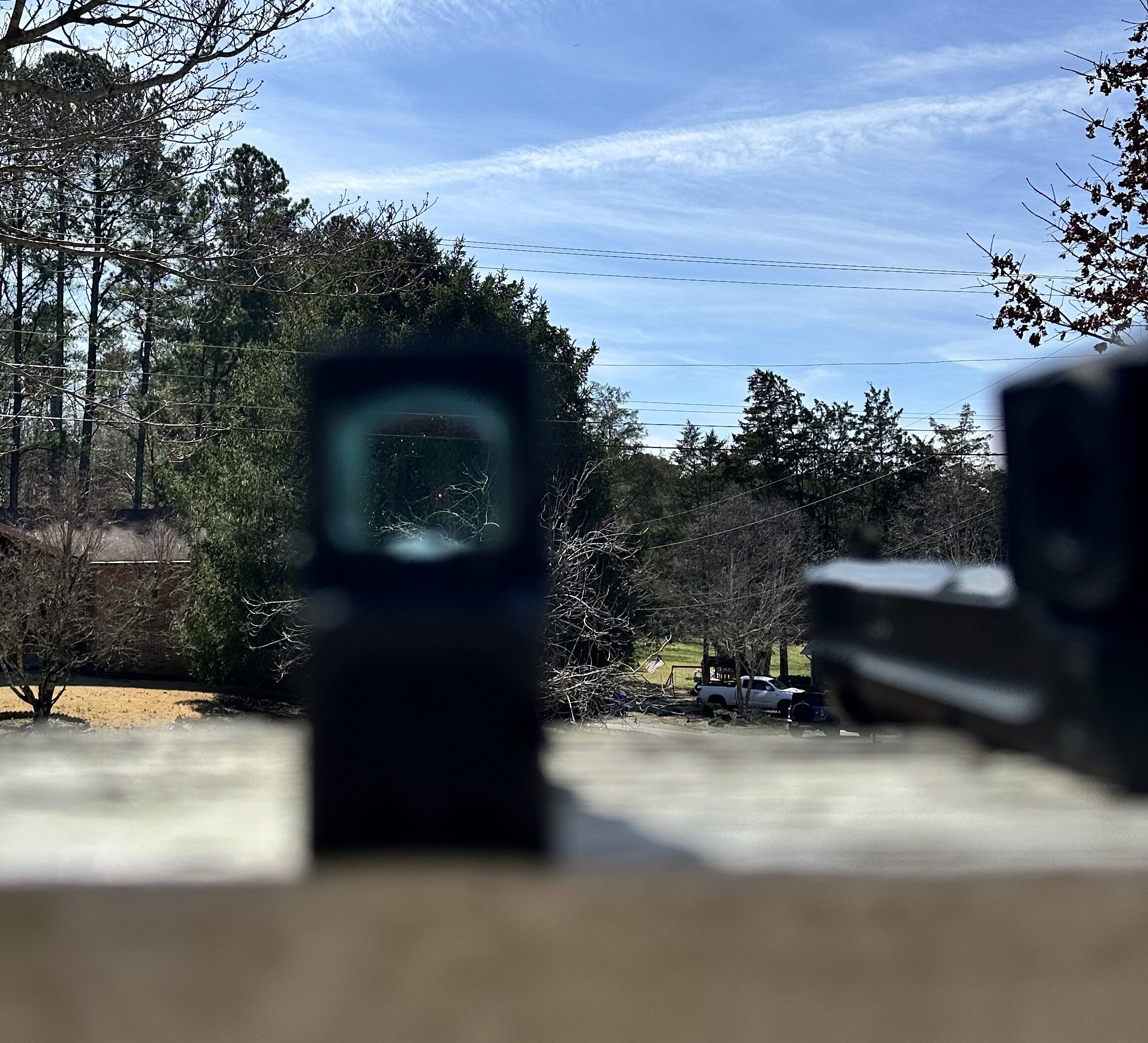
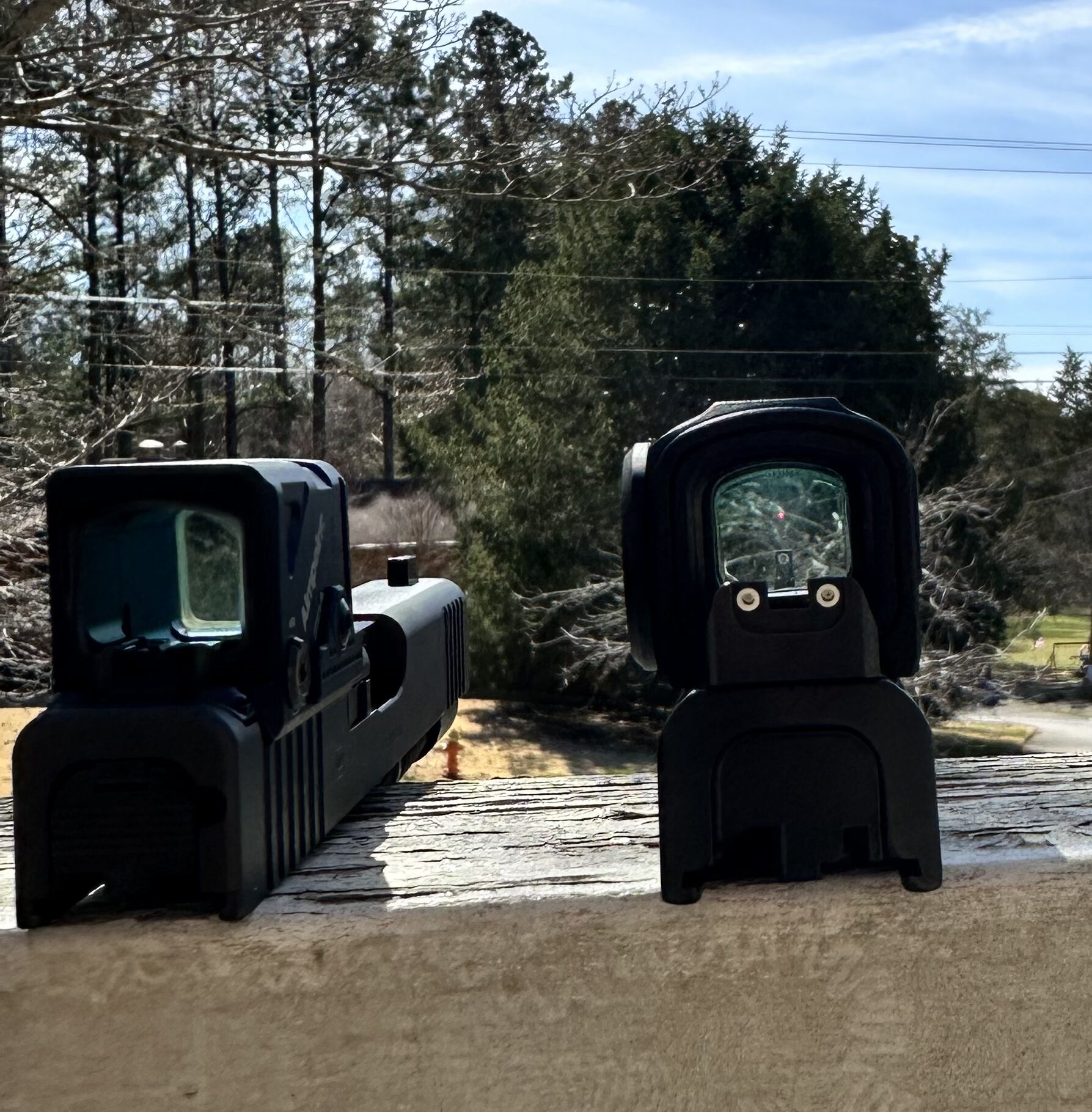
It’s kind of like the difference between a Vortex Razor HD Gen II and most other 1-6 LPVOs — the body of the Razor mostly disappears during the 1x shooting experience, which makes it “feel” more like a red dot sight. The body of the ACRO is simply thick, and Smith’s choice of large, suppressor-type BUIS means that the practical window is made smaller on an already small screen. That isn’t just a Smith problem — Glock/ACRO combos ship with tall Ameriglos too, as do most aftermarket direct-mill services.
The Good – In Practical Use
In use, I have found the COA to be… just there. And that’s a good thing. My performance on baseline drills and standards is no different with the COA relative to my current G48/EPS Carry combo. The optic isn’t holding my shooting back, and I think that’s largely a testament to the increased usable window on the COA. I think it’s great that user gets the same optic (and the same window size) on a slimline gun like the Glock 48 as well as more duty-oriented guns. Previous slimline optics generally dealt with 1632 or smaller batteries, and the COA’s 2032 is a welcome change there. I do not feel the COA detracts from concealment, and I have so far noticed no practical difference between it and my EPS Carry.
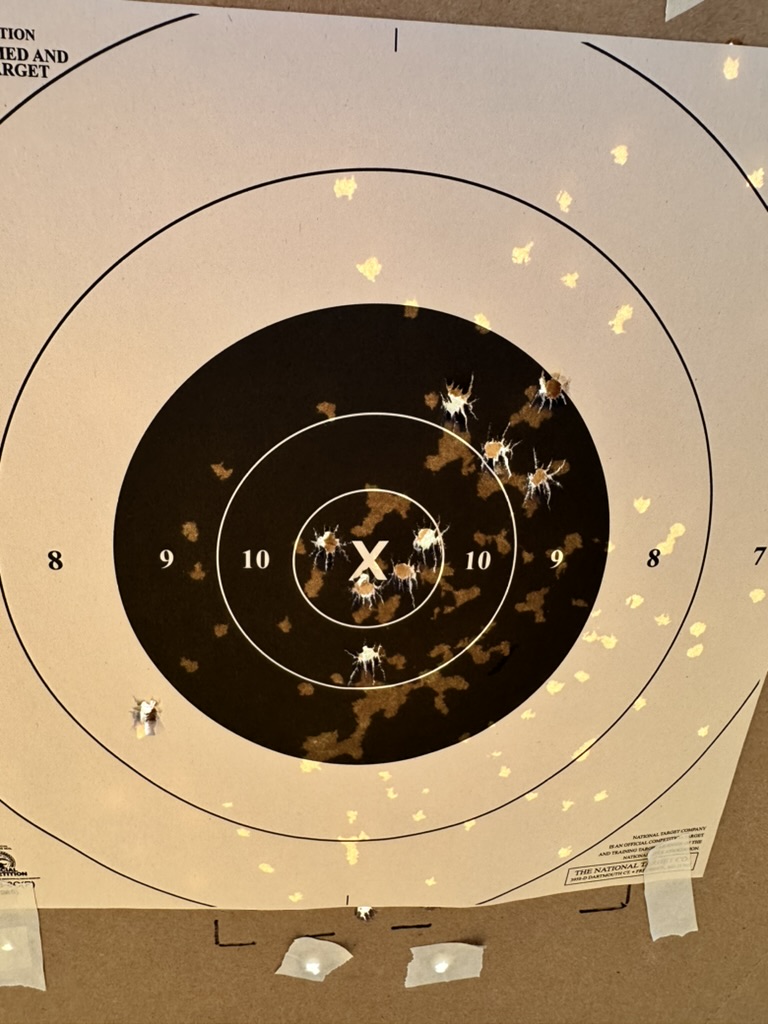
The Bad
I think the brightness step down feature is a little weird in execution. Step down is a battery-saving feature that works like this: when the optic is set above setting 9, the optic will periodically lower the brightness setting by one. This occurs once every two hours (without any button presses) until the brightness reaches setting 9. It will not step down below 9. While I can understand why Aimpoint elected not to go shake awake (accelerometers are a known failure point), I think the execution here is a little problematic.
My use showed that the 9/12 setting the step-down feature lands on is bright enough for daylight use, though perhaps not ideal. I believe it would present issues in adverse lighting situations such as shooting towards a setting/rising sun. For now, a concerned user should simply ensure they press a button every few hours. Doing this resets the step down clock.
My thoughts for changes would be to:
– Step down to 10/12 instead of 9/12
– Extend the “step” period to perhaps four or six hours
– (Potentially) allow the user to disable the feature
An overnight test did confirm the feature works as designed in my unit. I do think this is a better option than other non-shake awake battery saving options like automatic shut-off.
The Ugly
Well, this isn’t really about the COA, but my pistol did not work out of the box. This is the second Glock 48 I have purchased which displayed immediate functional issues. Reliability issues noted here included:
- 1x failure to return to battery with Federal HST 147gr
- 3x failures to eject with Magtech 115gr FMJ

After some brief experimentation, I chose to replace most of the parts in the gun, as I had spares on-hand. I chose this, rather than to waste a month or so shipping the gun back to Glock. Specifically, I replaced the trigger housing, trigger bar (upgrading to APEX), firing pin safety, extractor, and extractor depressor assembly. Finally, I went to a 15lb recoil spring assembly. Initially the problem appears to have been solved but I am only a few hundred rounds in at this point. I will know more in the future, but if problems continue I’ll be sending the gun back.
Conclusions
I am only about 500 rounds and a bunch of dry fire in at the time of this writing. I’ll be following up with a longer-term evaluation, but so far my impressions of the COA are very positive. The Glock 48 the COA is attached to is a different story, and I will continue to monitor the gun’s reliability. For now, my current Glock 48 is going to remain my carry gun. My plan is to keep the Glock 48 COA as my training gun until the gun is more proven.
Further Reading
If you enjoyed Sean’s first impressions with the Aimpoint COA, check out some of our other optic articles.



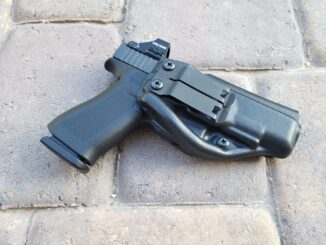

Be the first to comment